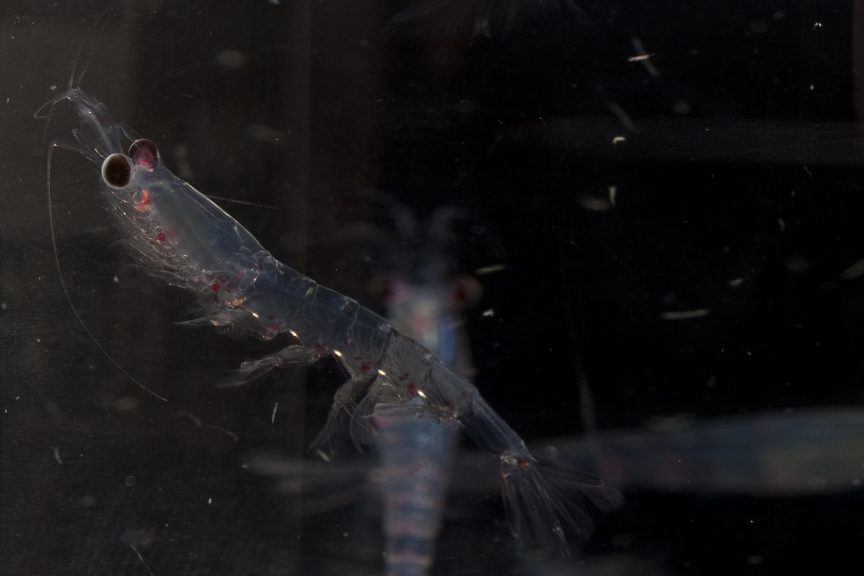Arctic zooplankton is moving north Published 15.11.2019

There is clear evidence that some of the arctic zooplankton has begun to disappear from its original habitat
“The most important arctic copepods are moving north, and are being replaced by their Atlantic ’cousins’ as back-up players in Greenlandic waters. This can be bad news for the polar cod, which is one of the key species in the Arctic, and could potentially have cascading effects in the whole ecosystem, and eventually up to us—the people,” explains Caroline Bouchard from the Greenland Institute of Natural Resources, one of the researchers behind the study of the fate of the arctic copepods.
Still an inadequate foundation
Caroline Bouchard, together with a research colleague from Université Laval in Canada, has written a scientific article, ”Calanus glacialis (the most common copepod species in Greenlandic waters) and the feeding success of young polar cod in warming Arctic seas,” which is almost finished, and soon to be published.
”We don’t know what effect the changes in zooplankton, and the polar cod, will have on the other trophic levels, for example those that feed on polar cod and copepods, such as sea birds, marine mammals, and a variety of other fish. At this time, we have unfortunately insufficient data to predict the potential consequences,” says researcher Caroline Bouchard from the Greenland Institute of Natural Resources.
Fat arctic copepods
The three most commonly found and most important copepod species in Greenlandic waters are: Calanus hyperboreus, the largest of its type among the arctic copepods, and the one with the highest fat content—65%. They are most commonly found from the Disko Bay and northwards, but can also be found in other places as well. The second largest species is Calanus glacialis, which are very widespread, and has a fat content of 62%. The third most commonly found copepod in Greenlandic waters is Pseudocalanus spp. The most commonly found copepods in West and Southwest Greenland is the Atlantic “cousin,” Calanus finmarchicus, which is smaller, and has a fat content of 34%.
Warmer waters both attract and repel
Another difference between arctic and Atlantic copepods is their life span. C. finmarchicus lives at most for one season, or about for about a year, while the arctic copepods species can live from three to six years. The surviving copepod swim to the sea floor when winter sets in, and remain there until the light returns in the spring, when they return to the surface of the sea.
”Eventually, as the Arctic Ocean becomes warmer, C. glacialis will become displaced by C. finmarchicus. That can accelerate the replacement of the dominant arctic forage fish, the polar cod, with species from warmer waters, such as the capelin (Mallotus villosus) and the sand lance (Ammodytes spp.),” says Caroline Bouchard.

